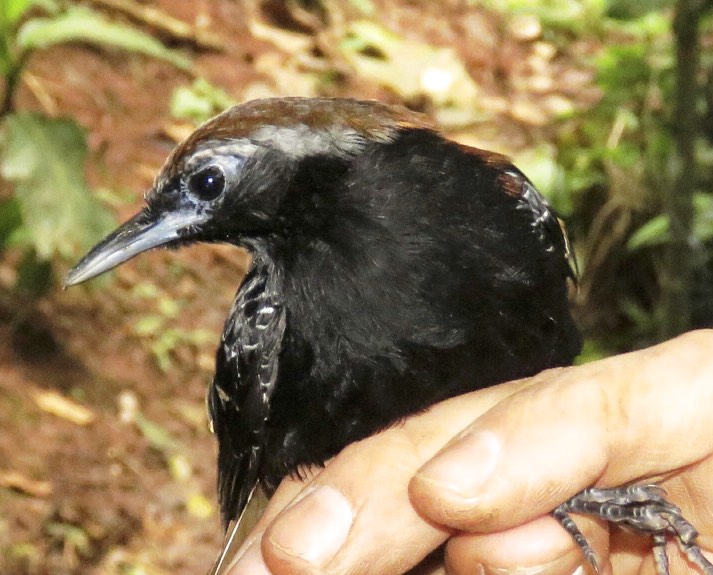Another new endemic bird species has been discovered at our Cordillera Azul forest conservation project in Peru. Endemic means that it only exists in one geographic location in the world, meaning this species has evolved to only exist in the unique forests of the Cordillera Azul National Park. This follows from previous discoveries of two new fauna species and 12 plant species found in Cordillera Azul. Biological monitoring of the unique, remote and vastly unexplored landscape of Cordillera Azul is a key part of our project, and one of the activities which is funded by the support of our clients through climate finance.
Discovery
In July 2016, a group of ornithologists arrived into the coffee-growing town of Flor de Café located in the picturesque outlying Andean ridges of Cordillera Azul. This town has become a destination for ornithologists and birdwatchers due to the discovery of a different distinctive species in the area some twenty years earlier, the Scarlet-banded Barbet. During an expedition, bird watcher Josh Beck spotted a strange, ground walking antbird. Antbirds are a family of birds in the American tropics that are known for following ants. The bird was documented with a sound recording and it quickly transpired to be a new species to science.
While there is still a lot to learn about the Cordillera Azul Antbird (Myrmoderus eowilsoni), here is what a follow-up expedition discovered. Its closest relative is the Ferruginous-backed Antbird (of which the nearest populations are about 1,500 km to the east in lowland forests of Brazil), it eats insects, the males and females sing different songs, it lives in pristine understory of humid forest, and its future near Flor de Café is very grim. Read the formal description of this species in ‘The Auk: Ornithological Advances’.
Our Cordillera Azul Antbird was found in the surroundings of the Plataforma hamlet, in the mountains between the Biabo river and the Ponsillo river; this precise ridge is the only known location of the species. Researchers hope that further expeditions can be carried out within the park to locate more populations that likely exist inland.
Its diminishing home
Worryingly, habitat destruction is advancing rapidly on the bird’s distinctive forest due to the expansion of coffee plantations. Chainsaws are an overwhelming component of the soundscape around town. Such is the nature of this relentless deforestation that locals were even asked to delay cutting activities so that a better voice recording of the Antbird could be gathered.
Hope for the Antbird
Flor de Café is located just 9 kilometres from the border of the Cordillera Azul National Park with over 13,500km2 of pristine habitat. Together with our partners and through climate finance from our clients, we are working to protect this area. Read more about our forest conservation and environmental education activities.
From both an ornithological and general ecological perspective, Cordillera Azul remains mysterious and tantalizing. Perhaps it holds a new hummingbird or tody-tyrant? Regardless of any future discoveries to be made in the park, it is our hope that the new Antbird brings attention to the incredibly biodiverse and distinctive ecosystems of the region. Hopefully this discovery serves as a potent reminder of how far we still have to go in cataloguing the diversity of life on this planet. Environmental education and conservation work is critical not only in the Plataforma hamlet, but also the entire Amazon basin, to ensure that this and all the yet undiscovered species endemic to the region continue to surprise us.
You can support this project and help more species, like the Antbird, be both saved and discovered through protecting the forest habitat of Cordillera Azul.
